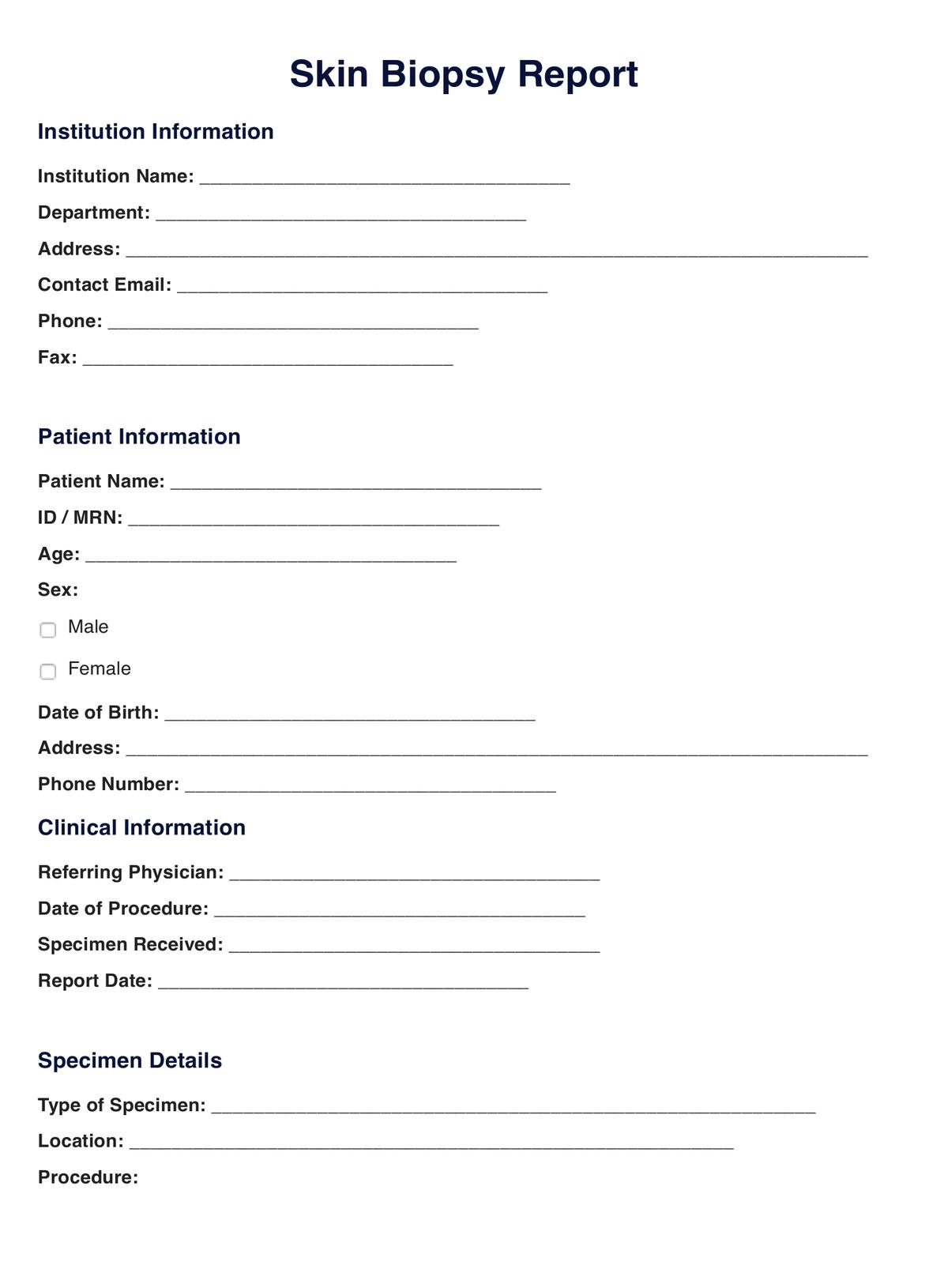A skin biopsy is a procedure where a small sample of skin is removed and examined under a microscope. It's performed to diagnose skin conditions, including cancers, inflammatory skin diseases, and infections.

Skin Biopsy
Explore Carepatron’s comprehensive skin biopsy pathology report template, designed for clarity and ease of use, ensuring detailed, accurate biopsy analysis
Use Template
Skin Biopsy Template
Commonly asked questions
There are several methods: punch biopsy (using a circular tool to remove a core), shave biopsy (shaving off the top layer), and excisional biopsy (cutting out the entire area). The method depends on the suspected condition.
Discomfort is usually minimal. The area is numbed with a local anesthetic before the procedure, but there might be some pain or soreness afterward.
EHR and practice management software
Get started for free
*No credit card required
Free
$0/usd
Unlimited clients
Telehealth
1GB of storage
Client portal text
Automated billing and online payments











